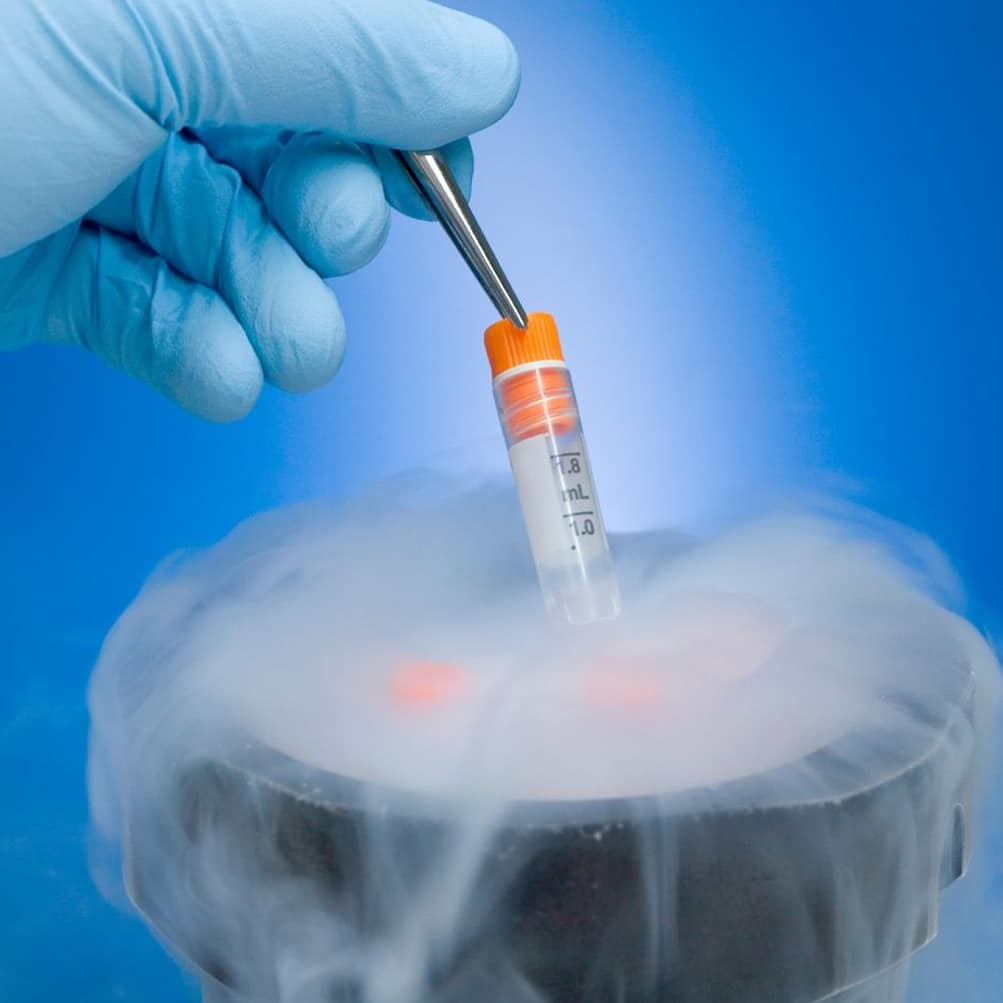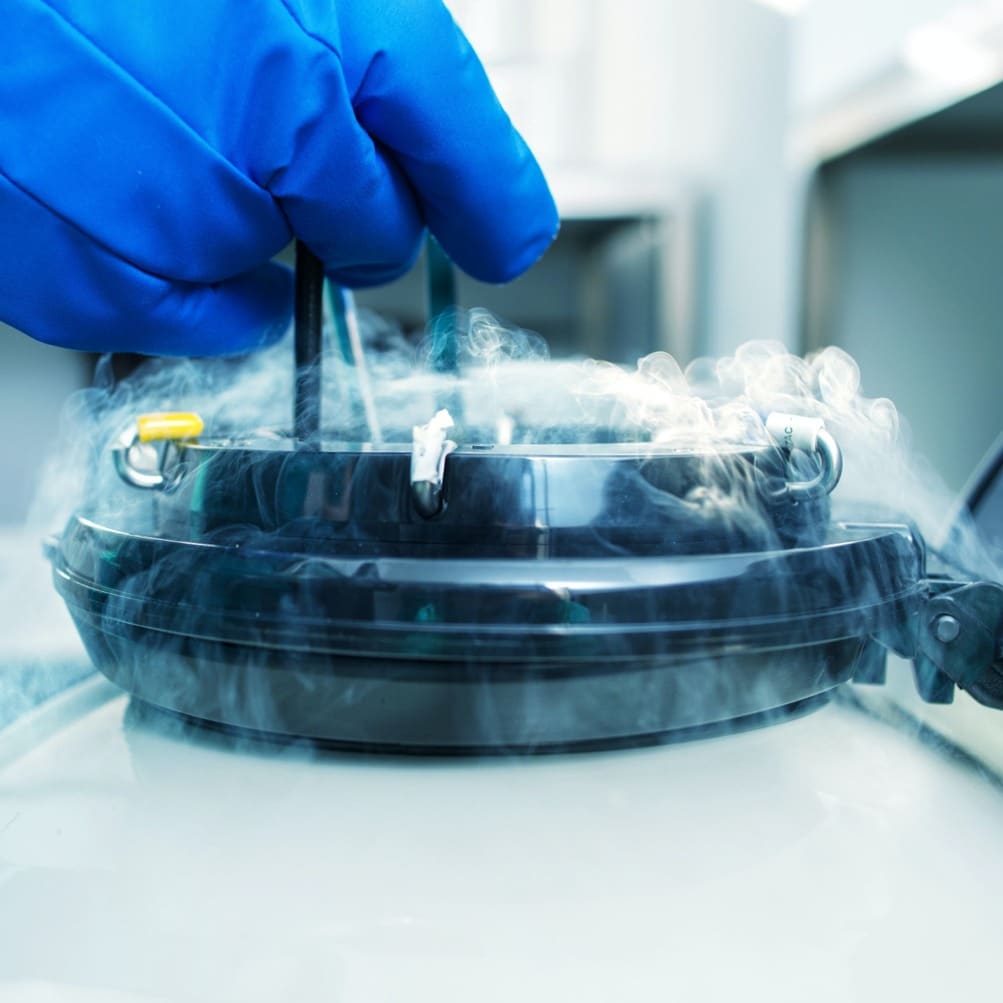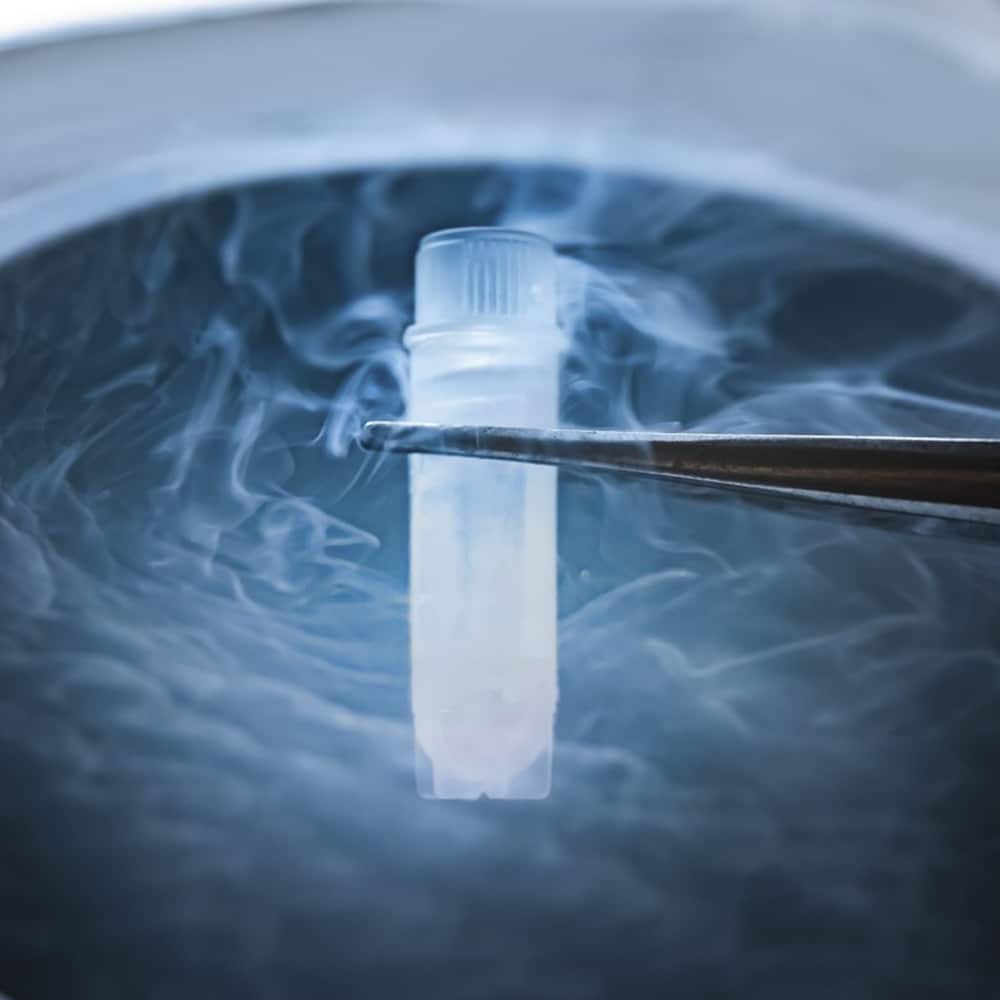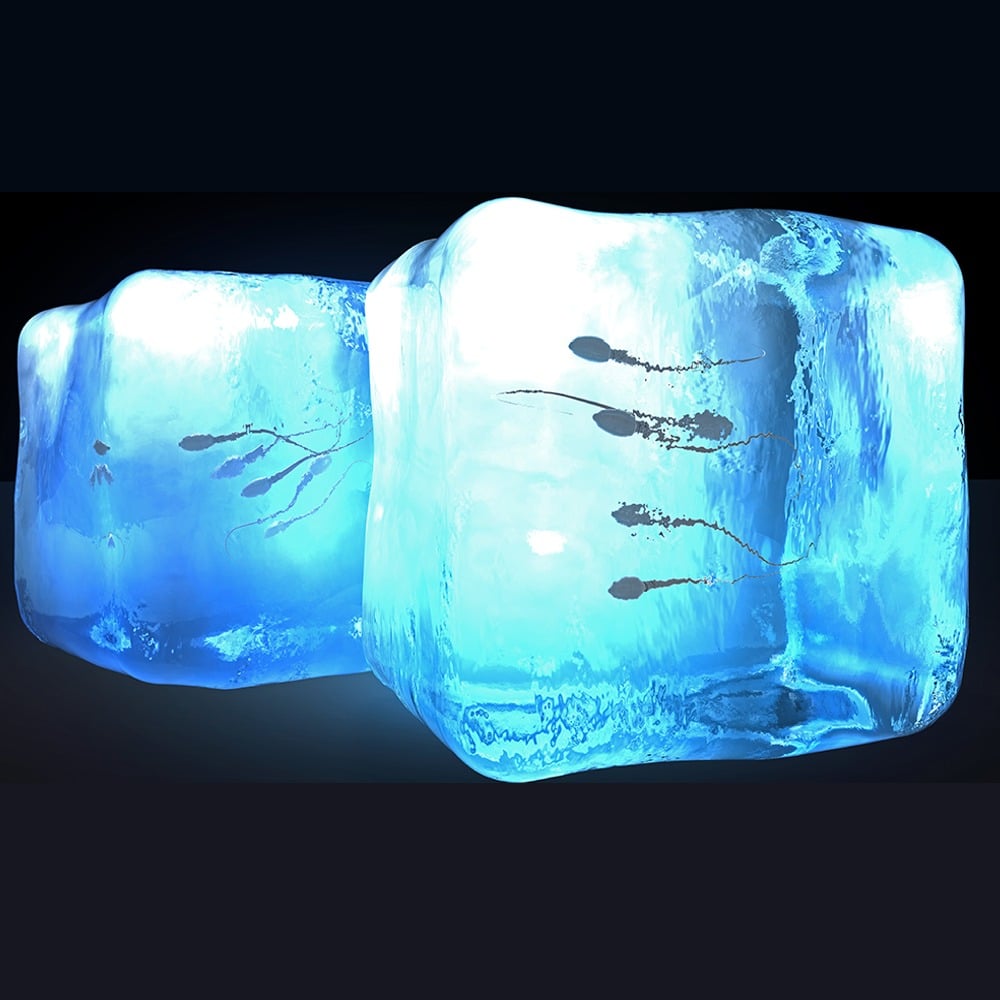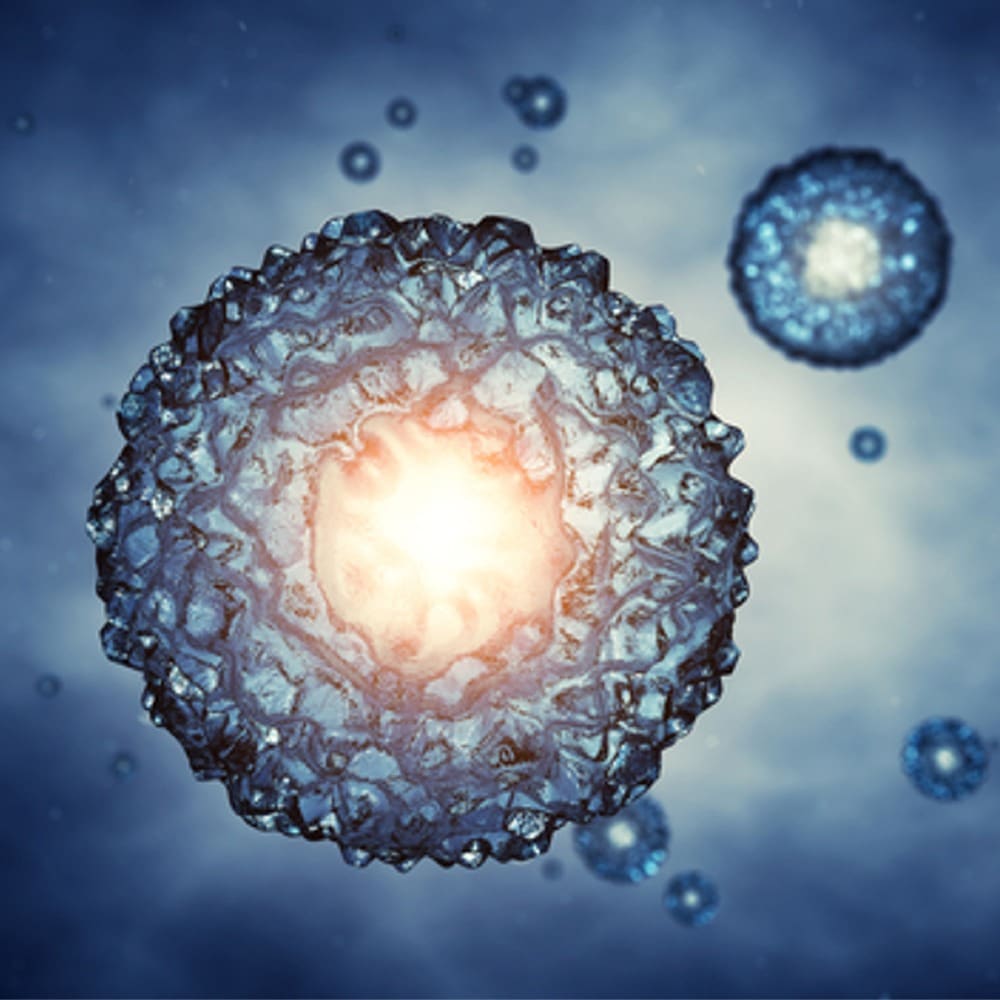Embryo Cryopreservation
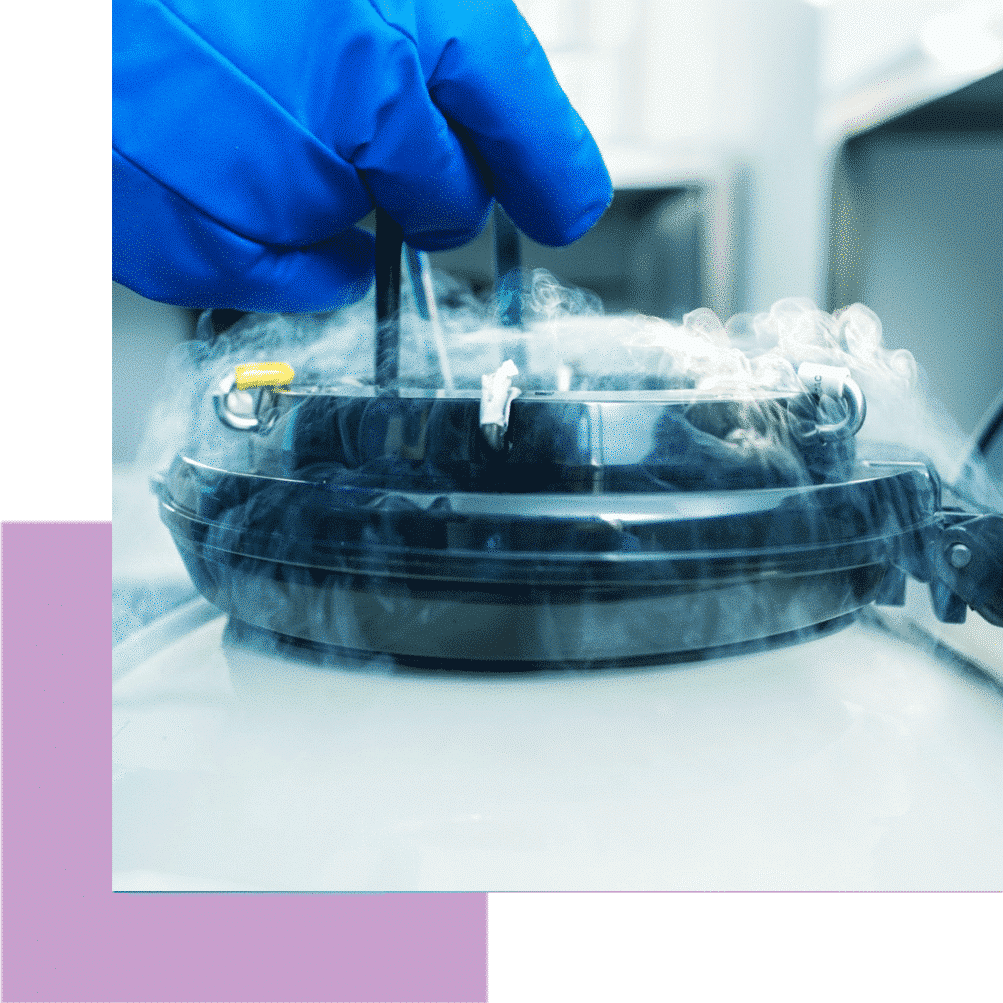
Surplus embryos that were not used in an embryo transfer are preserved using the cryopreservation method.
The surplus embryos that will arise may be cryopreserved for as long as specified by the law and be used in a next embryo transfer cycle or if the couple later decides to have more children.
Surplus embryos that were not used in an embryo transfer are preserved using the cryopreservation method. This ensures that if the IVF attempt made with fresh eggs fails, there is the option of using the cryopreserved embryos at a later stage.
If pregnancy is achieved on the first attempt, the cryopreserved embryos are kept in the cryopreservation bank for as long as permitted by the Law, until the couple decides to have more children. The Law offers couples who have concluded their family programming the option to donate their surplus cryopreserved embryos without compensation, primarily to people in need, or for scientific or therapeutic reasons without compensation, or to destroy them. According to Law 3305/2005 on assisted reproduction, cryopreserved embryos can be stored for 5 years, with the option of extending this period by another 5 years (provided the woman has not reached the age of 50).
With the modern embryo cryopreservation method, vitrification, the success rates are similar to those where fresh embryos were used, while research has indicated that cryopreservation methods are safe and do not affect the quality of embryos.
Cryopreservation takes place in extremely low temperatures (at -196°C), at which stage metabolism is interrupted almost completely, and, consequently, changes are minimal. The liquefied gas used widely in assisted reproduction, as well as other biological and medical applications, is liquid nitrogen (LN2), which can maintain such low temperatures. Due to its composition, liquid nitrogen does not cause chemical reactions, and, therefore, does not harm cryopreserved biological samples.
Relevant Topics
-
Information form for the use of the CHLOE OQ assessment tool
Information form for the use of the CHLOE OQ artificial intelligence-based oocyte assessment tool Institute of Life-IASO and CHLOE...
-
Testicular Tissue Cryopreservation
Testicular Tissue Cryopreservation The testicular tissue is treated in an andrology lab, so that sperm suitable for fertilization or...
-
Embryo Cryopreservation
Embryo Cryopreservation Surplus embryos that were not used in an embryo transfer are preserved using the cryopreservation method. The...
-
Ovarian Tissue Cryopreservation
Ovarian Tissue Cryopreservation Ovarian tissue cryopreservation is a method used to preserve fertility, whereby the outer layer of the...
-
Sperm Cryopreservation
Sperm Cryopreservation Sperm freezing or cryopreservation is a process whereby the sperm cells are preserved for future use. Sperm...
-
Egg freezing
Egg freezing Egg freezing, or human oocyte cryopreservation, is not a need but a choice. Motherhood is a conscious...


